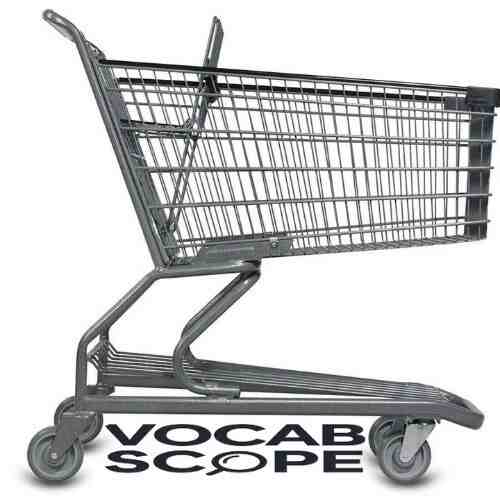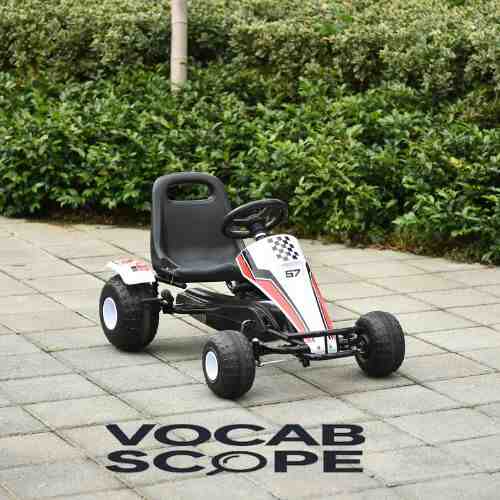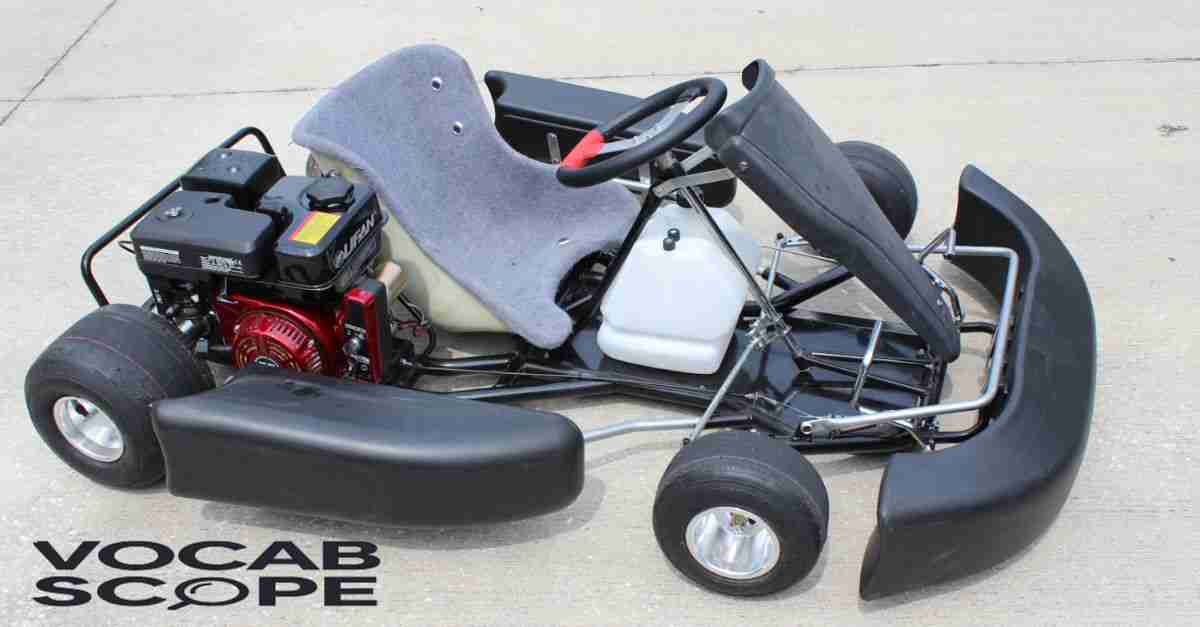When it comes to English homophones, “cart” vs “kart” are commonly confused. While these words sound the same, their meanings, usages, and origins are distinct. This article will delve deep into the differences, help clarify their proper uses, and provide a clear understanding of when to use “cart” or “kart.”
Let’s explore this often-debated topic of “cart vs kart” and break it down into manageable pieces of knowledge.
What is a “Cart”?

A cart is a wheeled vehicle designed for transporting goods, materials, or people. It usually has two or four wheels and can be manually pushed, pulled by animals, or even motorized. In everyday life, you’ve likely seen or used carts in various forms. For instance, a shopping cart is commonly used in grocery stores, while a hand cart is often seen at warehouses or during moving processes to transport heavy objects.
Historically, horse-drawn carts were used for transporting goods or people, especially in agricultural and rural settings. These types of carts were essential for centuries before the development of modern vehicles.
Common Types of Carts:
- Shopping Cart: Found in supermarkets for transporting groceries.
- Hand Cart: Used in warehouses or during moves for carrying heavy items.
- Horse-Drawn Cart: A traditional cart pulled by animals, still seen in some rural areas.
Carts serve practical, transport-related purposes and are designed to make the movement of goods easier and more efficient.
What is a “Kart”?

A kart is a small, lightweight, motorized vehicle primarily used for recreational racing or competitive go-karting. Unlike a cart, which is designed for transporting goods, a kart is built for speed, agility, and maneuverability. Go-karts, a popular form of karts, are commonly driven on tracks in amusement parks, at racing events, or in casual races.
Typically, karts are low to the ground, powered by small engines, and can range from basic models for children to advanced versions used in competitive racing circuits. They are often associated with fun, thrilling activities, and games like Mario Kart.
Here are some key characteristics of a kart:
- Small size: Compact and designed for one person.
- Motorized: Powered by an engine, usually capable of high speeds.
- Recreational use: Used mainly for racing and entertainment.
Go-kart:

A go-kart is a small, motorized vehicle specifically designed for racing, typically featuring a simple chassis, a low profile, and an open design. These vehicles are often equipped with powerful engines that allow for high speeds, making them popular for both recreational use at amusement parks and competitive racing on dedicated tracks.
Go-karts are commonly used in karting events, where drivers can compete against each other in a safe and controlled environment. The appeal of go-karts lies in their accessibility; people of various ages can enjoy driving them, and they serve as an introduction to motorsports for many aspiring racers.
Mario Kart:

Mario Kart is a popular racing video game series developed by Nintendo, featuring characters from the Mario franchise. First launched in 1992 with Super Mario Kart for the Super Nintendo, the series has since evolved across various gaming platforms. Players race against each other using karts while navigating imaginative tracks filled with obstacles, power-ups, and shortcuts.
The game emphasizes fun and competitive gameplay, allowing players to choose their favorite characters and vehicles. With its iconic items like the banana peel and blue shell, Mario Kart has become a beloved staple in multiplayer gaming, appealing to fans of all ages. The series has spawned numerous sequels and spin-offs, solidifying its place in gaming history.
Cart vs Kart: The Differences
Though cart vs kart may sound similar, their meanings and usages are vastly different. Understanding these differences is crucial for using the right term in the right context.
Meaning:
- Cart: A vehicle used for transporting goods or passengers, often associated with manual or animal-drawn transportation.
- Kart: A small vehicle used for recreational racing, typically motorized.
Usage:
- Cart: Found in contexts involving transport, such as a horse-drawn cart or a shopping cart.
- Kart: Typically used in a sporting or recreational context, such as go-kart racing.
Physical Characteristics:
- Cart: Larger, designed to carry heavy loads, with varying numbers of wheels.
- Kart: Small, lightweight, and fast-moving, designed for speed.
Table: Differences between “Cart” and “Kart”
| Feature | Cart | Kart |
| Purpose | Transport goods or people | Recreational racing |
| Size | Large, capable of holding many items | Small, one-person vehicle |
| Number of Wheels | Typically 2 or 4 wheels | Always 4 wheels |
| Power Source | Manual or animal-powered | Motor-powered |
| Common Types | Shopping cart, hand cart, horse cart | Go-kart, racing kart |
| Material | Metal, wood | Lightweight metal, plastic |
Origins of “Cart” and “Kart”

Understanding the origins of these words can help us appreciate their distinct uses and avoid confusion
“Cart”:
The word “cart” has its roots in the Old Norse term kartr and the Old English word craet, both referring to vehicles used for transporting goods. The term has been in use since the 13th century and originally described simple wheeled vehicles drawn by animals, such as horses or oxen.
Over the centuries, “cart” evolved to encompass various forms of wheeled transport, including hand carts and shopping carts. Its enduring relevance reflects its practical utility in agriculture, trade, and everyday life, adapting to the needs of different cultures while maintaining its core function of carrying loads.
Timeline of “cart”:
- Old Norse “kartr” (pre-10th century)
- Old English “cræt” (10th-11th century)
- Middle English “cart” (12th-15th century)
- Modern English “cart” (15th century onwards)
“Kart”:
The term “kart” emerged in the 20th century as a simplified form of “go-cart,” which originally referred to small, lightweight vehicles designed for children to ride. The first go-karts appeared in the late 1950s, created by enthusiasts looking to race small vehicles on tracks.
These vehicles quickly gained popularity for recreational racing, leading to the term “kart” becoming synonymous with racing in a competitive context. As karting grew, so did the design and engineering of karts, leading to more advanced models used in professional racing circuits today.
The evolution of the word reflects the sport’s growth and the transition from simple children’s toys to serious racing machines.
Timeline of “kart”:
- 1950s: Invention of the go-kart by Art Ingels in California
- 1959: First recorded use of “go-kart” in print
- 1960s onwards: “Kart” begins to be used as a shortened form
Origins of “Go-Cart”
The term “go-cart” originated in the early to mid-20th century, primarily referring to small, lightweight vehicles designed for children to ride. These simple contraptions were often built from scrap materials and featured a basic frame with wheels, resembling miniature cars. The concept gained traction in the 1950s when enthusiasts began creating more sophisticated versions for racing.
As these small vehicles became popular for recreational use, the term “go-cart” evolved to denote both children’s toys and competitive racing machines. Over time, “go-cart” gave rise to the more streamlined term “kart,” which is now widely used in the context of racing. The evolution of the term reflects the increasing popularity and commercialization of kart racing as a sport.
Timeline of “kart”:
- 16th century: First recorded use of “go-cart” for children’s walking aids
- 1950s: “Go-kart” emerges as a distinct term for small racing vehicles
Examples in Context
“Cart” in Context:
- I pushed the cart down the grocery aisle, filling it with fresh produce and snacks.
- The farmer loaded hay onto a cart to transport it to the barn.
- At the amusement park, we rented a cart to explore the attractions more easily.
- She used a hand cart to move the heavy boxes from one room to another.
- The old cart creaked as it rolled along the uneven dirt road.
- During the festival, vendors lined the streets with their colorful carts, selling delicious treats.
- The zoo provided carts for families to rent while they explored the sprawling grounds.
- He noticed that the shopping cart had a wobbly wheel, making it difficult to steer.
- The children enjoyed riding in a cart pulled by a pony during the fair.
- As the sale approached, customers filled their carts with discounted items and holiday gifts.
“Kart” in Context:
- After school, we often headed to the local track to race our karts against each other.
- The kart he built for the competition features a powerful engine and custom decals.
- I can’t wait to play Mario Kart with my friends this weekend; it’s always a blast!
- She took the lead in the kart race, expertly navigating the sharp turns of the track.
- During the birthday party, the kids had a great time driving around in colorful karts.
- The go-kart rental shop offers a variety of models for both beginners and experienced racers.
- He watched as his favorite driver sped past him in a sleek racing kart.
- The kart track was filled with excitement as participants prepared for the big race.
- She learned how to handle the kart and even won her first race after just a few tries.
- The engineering behind a racing kart involves precision and attention to detail for optimal performance.
Conclusion
Understanding the distinctions between cart vs kart is essential for clear and effective communication. While both terms may sound similar, they serve different purposes and contexts. A cart is primarily used for transporting goods, found in everyday settings like grocery stores or farms, whereas a kart is a small, motorized vehicle designed for racing and recreational activities.
Recognizing these differences enhances your writing and helps avoid confusion. Whether you’re navigating the aisles of a supermarket with a cart or racing on a track in a kart, each word carries its unique significance and history. By knowing when to use each term, you can ensure that your language remains precise and engaging.

“Robert Henry is an experienced blogger with a passion for language and education. His insightful posts on Vocab Scope offer readers valuable tips on vocabulary and grammar. With a background in linguistics and a knack for clear, engaging writing, Robert is dedicated to helping others enhance their communication skills.”






